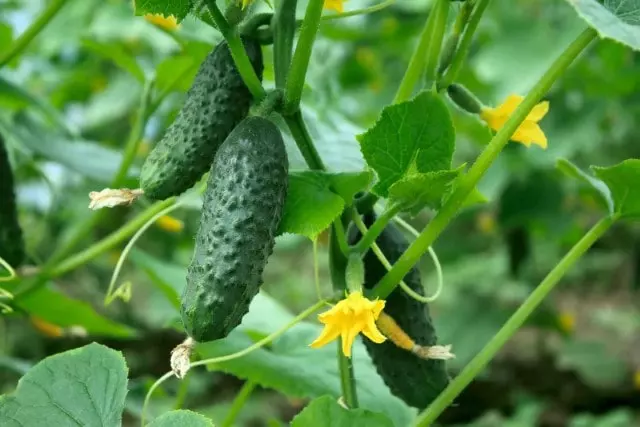The cucumber, Cucumis sativus, is the fruit of a fruiting vegetable of the same name, belonging to the Cucurbitaceae family, like watermelon, melon, and zucchini. Learn all about how to grow cucumbers step by step in this article.
It has a productivity of 55 lbs. (25 kg) per square meter, which makes it the most abundant among the typical urban garden crops.
Furthermore, because it has a high consumption rate, its cultivation is critical.
They are vegetables that require little care, so it is relatively simple to plant cucumbers successfully in your garden or orchard.
But by doing what they need and with some patience, a single cucumber plant is usually enough to provide for a family’s needs.
The cucumber plant is a tremendously efficient producer!
Do you want to know what are the requirements to grow cucumbers? Take a look at this guide, and it will solve any doubt you may have.
Table of Contents
How To Grow Cucumbers? The Method [11 Steps]
Clear the Soil to Grow Cucumbers
Remove weeds and debris from previous crops and all types of debris to ensure that cucumbers receive the proper amount of nutrients.
All plants should be pulled out at the root to prevent them from growing back.
If you can, it is ideal to use a power tiller and run it through several times.
Moisten The Soil Before Growing Cucumbers
This decreases the chance of the seeds being expulsed by the water’s force.
Fertilize the Soil to Grow Cucumbers
Sprinkle some granular fertilizer on your garden soil to improve the overall quality before you start planting cucumbers.
If you use natural fertilizers, mix them into the soil to a depth of 2” (5 centimeters).
Insert The Seeds into The Soil to Grow Cucumbers
Make sure they are kept to a maximum depth of 1” (2.5 centimeters). Cover them lightly.
If you sow cucumbers in soil, bury 2 or 3 seeds in each hole (Order Seeds Here).
Each hole should be kept 16” to 35” (40 to 90 centimeters) apart. Keep in mind that bush varieties can be spaced closer together than vine varieties.
If planting in a seedbed or pot, place 2 or 3 seeds in the soil.
- Cucumis Sativus: These finest quality, non-GMO, USDA Organic Marketmore Cucumber seeds produce hefty dark green, smooth fruits 8-9 inches long with a sweet and mild flavor ideal for slicing, salads, sandwiches and soups.
- Benefits of Trellising: When growing cucumber vines a trellis will encourage the vines to climb, which helps protect the fruit from damage, and help maximize space in smaller gardens.
- Freshly Packed: These seeds are packed for the current growing season and will provide high germination rates next year as well.
Select The Seedlings
In 5 to 8 days, the seeds will germinate.
Keep the strongest seed if more than one has germinated in each hole. To do this, do not pull the weak one, as you may damage the leaves. A simple pruning at ground level is sufficient.
Add Fertilizer When the Seedlings Sprout
Covering the soil with compost will prevent weeds from growing around your plants and rob them of nutrients. At the same time, compost will help you maintain a good temperature for the cucumbers.
Transplant Your Sprouts
If you grow cucumbers in pots or seedlings, you should transplant them a month after planting. Choose a sunny, well-ventilated area in the garden. Leave a distance of 16” to 35” (40 to 90 centimeters) between each plant.
Protect Your Plants
Use netting to protect your plants from pests and possible predators, especially rabbits and squirrels. Protection is important mainly during the first stages.
You should remove the netting once the plants have grown too large to remain inside it.
Fertilize Regularly to Grow Cucumbers
If you fertilized the soil before planting cucumbers, you should do it again once the runners appear on the vines and the plant begins to flower (Order Fertilizer Here).
If you prefer organic fertilizers, use compost or decomposed manure.
If you have not used a granular fertilizer in soil preparation, use a mild liquid fertilizer every two weeks.
If the leaves turn yellow, you need a fertilizer with high nitrogen content. Remember that using pea or bean sowing beforehand considerably improves the level of nitrogen in the soil.
Inorganic fertilizers should not be used on the foliage or directly on the fruits.
Nor should you over-fertilize your plants. If you do, you could hinder the growth of your fruits and limit their yield.
- For more nutritious and tasty vegetables
- Optimum levels of primary plant nutrients
- Contains no GMOs, chicken manure or sewage sludge
Prepare a Trellis or Structure to Support the Plant
Although the cucumber plant grows horizontally and can be left as a creeping plant, it is best to use a guide. This is a vital procedure to keep the plant upright, allowing for better ventilation and light.
All this will have an impact on the final production, fruit quality, and disease control.
This is relatively easy, as most cucumber plants (especially the vine varieties) are trained by their tendrils.
You should use a cage trellis, stake, fence, or almost any other vertical structure (Order Trellises).
Guide the vines into the trellis. As the plants grow, guide their position on the trellis by gently wrapping the tendrils of the vine along the trellis.
To give the plant more vigor you can support it with twine, cutting the main guide at the end of the stake or the side shoots as soon as they have more than 4 leaves, although this is not an essential practice.
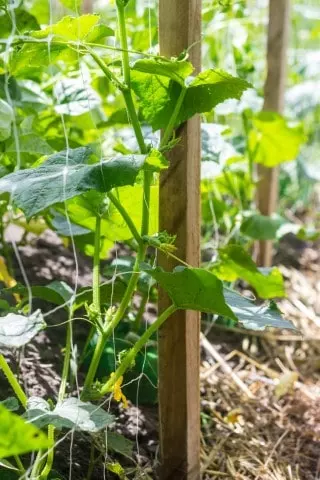
How to Prune Cucumber Plant
Throughout the life cycle of this vegetable, we will remove the leaves in poor condition.
If we want to give more vigor to the flowering and fruiting process, we can remove some secondary stems and leave the main one and two or three more, maintaining symmetry in the plant.
Remove old, yellow, or diseased leaves. When the humidity is too high it will be necessary to put some fungicide paste on the cuttings.
You should also clean the fruits in the first 8 leaves -approximately 27” (70 centimeters), so that the plant can develop a strong root system before going into production.
These fruits are removed because they are usually of low quality, as they touch the ground and limit the production of the upper part of the plant.
Remove, in turn, all curved and malformed fruits.
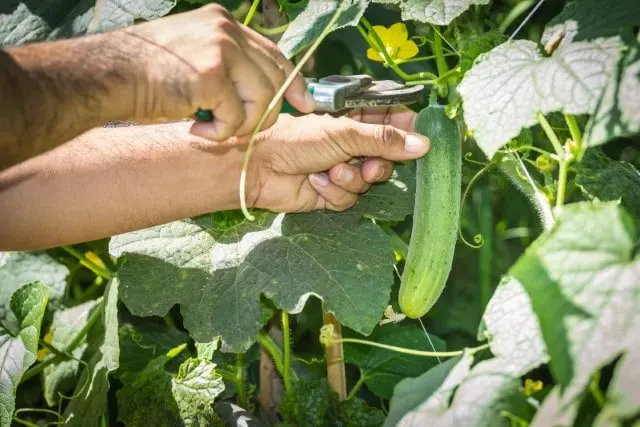
What Do We Need to Grow Cucumbers?
When Do We Need to Grow Cucumbers? The Date
Sowing: between April and June.
Harvest: between June and December.
If you live in very cold regions, ideally you should sow cucumbers at least two weeks after the last frost.
Where To Grow Cucumbers? Temperature and Light
The more light they receive, the greater the fruit production, since good lighting makes it easier for the plants to carry out the complete photosynthesis process.
Sunlight is also important for regulating temperature. A well-sunny location ensures that the soil remains at a good temperature. This allows the seeds to germinate more easily.
Ideally, they should remain in the sun for 10 to 12 hours.
As for temperature, cucumbers are very sensitive to low temperatures. During the most vulnerable stages, the risk of death by frost is quite high.
The ideal temperature is between 64 and 80 °F (18 and 27 ºC constant).
Below 62 °F (17 ºC), during the day, malformations in leaves and fruits occur. During the night, the minimum threshold is 53 °F (12ºC).
Above 86 °F (30ºC), plant and temperature imbalances begin to occur.
In this sense, it requires more heat than melon, but less than zucchini.
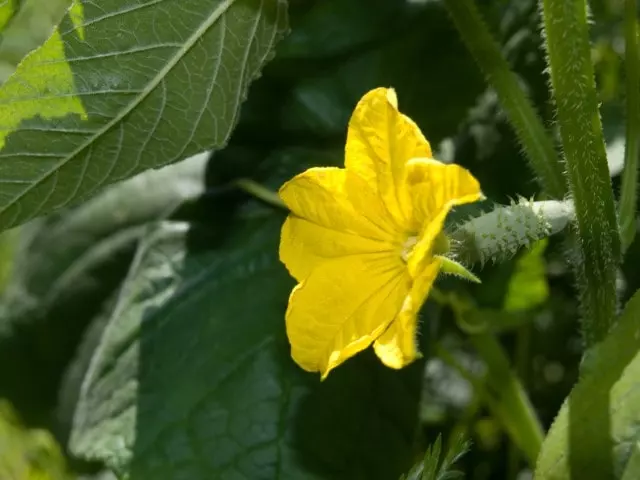
Moisture and Risks: How Do We Water?
Cucumbers require high humidity throughout their life cycle due to their large leaf area.
The optimum relative humidity is between 60-70% during the day and 70-90% at night.
Excessive humidity can reduce production as well as cause fungus.
Recommendations:
- Preferably perform drip irrigation to regulate water flow. This also keeps the foliage dry and prevents the appearance of fungus.
- By moistening the soil before planting cucumbers, the risk of expelling the seeds as a result of the force of the water is reduced.
- The frequency of watering will depend on the particular conditions, however, you should always keep the soil moist, avoiding puddles.
- If you water with a hose, you should provide at least 1.2” (3 centimeters) of water at each watering.
- Maintaining optimum humidity is essential once the fruit begins to sprout.
- If you water in the morning, the crop is more likely to take longer to work, since the energy of the first hours is invested in evaporating water from the surface of its leaves.
Substrate and Nutrients: How Do We Prepare the Soil?
The ideal soil should be loose, well-drained, and with sufficient organic matter.
This type of soil heats up faster and holds heat more easily.
If the soil is too dense or too sandy, the root system is affected, causing the plant to die or not produce edible fruit.
Cucumber is tolerant to salinity, but if the concentration of salts is too high, the plants find it very difficult to absorb irrigation water.
This results in crooked fruits, weak stems, and rather slow growth. If, on the other hand, there is a low concentration of salts in the soil, the plants produced are leafier but more susceptible to various diseases.
The optimum pH ranges between 5.5 and 7.0. Learn more about How to Measure Soil pH.
In terms of nutrients, cucumber is quite demanding, so it is advisable to work well on the substrate and add a good fertilizer. The best natural fertilizers are enriched compost or aged manures.
The most widely used fertilizers are simple in solid form – calcium nitrate, potassium nitrate, ammonium nitrate, potassium sulfate, magnesium sulfate, etc. – and in liquid form – phosphoric acid and nitric acid.
If you use inorganic fertilizer, choose a slow-release granular fertilizer and follow the label instructions to determine the amount to add to the soil.
Finally, it is important to remember that cucumbers tolerate high temperatures well as long as there is adequate moisture, so before planting cucumbers make sure the soil you plant them in drains easily.
Recommendations:
- If the soil is very clayey add organic matter. You can use worm humus. In this way, you will also be favoring the good drainage of the soil.
- If the soil is very dense, add compost or organic matter such as decomposed manure.
- Drill the soil with a spade or rake before adding fertilizer. This makes it easier for the additives to mix and, at the same time, you favor the plant’s root system.
- If you need to increase the pH of the soil, incorporate agricultural lime.
- If you need to lower the soil pH, add sulfur or aluminum sulfate.
- Organic fertilizer should be applied after the plants have sprouted and the soil has warmed up sufficiently. Artificial fertilizers, on the other hand, can be applied soon after planting the seeds.
- Dark compost is recommended to keep the soil moist and warm.
- If your garden tends to flood, you need to do everything you can to fix it. You can create slopes so that water drains to one side and install gutters to make it easier to collect water.
- Another effective technique to promote drainage is to create mounds of soil and plant the cucumbers on them, so less water will accumulate at the foot of your plants. At planting time, provide a good amount of mulch, compost, peat, or manure to fluff the soil and aerate it. If you also add river sand and mix it well with the soil, the result will be favorable.
- In extreme cases, it is best to install a network of drainage pipes.
How to Grow Cucumbers in Pots?
If you sow cucumbers in pots, the pot should be at least 5.2 Gallons (20 liters) in volume or at least 16” (40 cm) deep. Cucumbers require space for their development, but their roots are not very long.
Cucumber Harvesting
Cucumber sprouts 60 days after transplanting. It is a crop that gives an abundant and prolonged harvest. A single bush is enough for a family’s consumption.
To harvest cucumbers should not wait until they are fully formed and ripe, because in that case they are yellow and turn yellow. Do not allow cucumbers to turn yellow on the plant.
Slicing cucumbers should be 6” to 8” (15 to 20 centimeters) long, while small varieties such as gherkins should be harvested when they reach 2” (5 centimeters).
Cucumbers can usually be removed from the vine without the use of scissors.
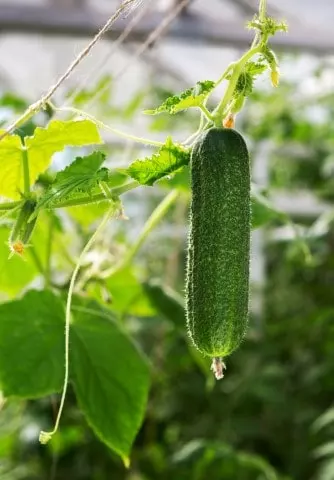
Favorable Associations for Growing Cucumbers
They associate well with onions, peas, spinach, lettuce, chard, beets, beans, and sunflower.
They are also compatible with garlic, basil, celery, cabbage, turnip, and radish.
They do not get along well with potatoes, tomatoes, eggplants, and, in general, with vegetables of the same family and Solanaceae, as they compete for sun, water and nutrients.
Recommended reading: Best Companion Plants for Cucumbers (and Plants to Avoid)
Common Pests and Diseases of Cucumber
Aphids
The application of nettle slurry is recommended as a preventive measure.
To combat them, potassium soap or biodegradable soap can be applied on the underside of the plants. It should be applied very early in the morning or the afternoon when the sun is no longer shining on the leaves.
The soap will help clean the honeydew excreted by the aphid and soften its cuticle.
If the pest persists or is very abundant, after cleaning the leaves with the soap, apply neem extract, which will act as an insecticide.
Red Spider Mite
It can be sprayed at night to maintain humidity.
To combat an infestation, an extract of garlic and chili can be applied, although if the plant is badly affected, it is best to eliminate it to prevent it from spreading to other plants.
Whitefly
Spray the underside of leaves with 1% potassium soap with rainwater or distilled water.
Powdery Mildew
It is best to install a drip irrigation system and apply horsetail for prevention. It also works to remove weeds and crop debris and encourage crop ventilation.
Verticillium Wilt
Verticillium or verticillium is a common soil fungus that thrives in temperate climates around the world and can be present in the soil for decades.
This fungus spends the winter in the soil as dormant mycelium or microscopic black resting structures known as microsclerotia, waiting for better circumstances to emerge.
They reproduce by entering injured plant tissue through the roots. Verticillium host species can be found in many common weeds, including dandelion and dandelion weeds.
Verticillium wilt is a disease that affects more than 350 species of eudicolous plants. It is caused by six species of Verticillium fungi: Verticillium dahliae, Verticillium albo-atrum, Verticillium longisporum, Verticillium nubilum, Verticillium theobromae, and Verticillium tricorpus.
Many plants with significant economic weight are susceptible, such as cotton, tomatoes, potatoes, canola, eggplants, peppers, and ornamentals, as well as others in natural vegetation communities.
All monocots, gymnosperms, and ferns are immune to the disease, as are many eudicot species and crops.
Main Benefits of Cucumbers
- They have a low caloric content and a high proportion of water, making them ideal to be included in low-calorie diets.
- Cucumbers are rich in potassium and low in sodium, which gives them a diuretic action that favors the elimination of excess fluids from the body.
- They can help with hypertension, hyperuricemia, and gout, as well as kidney stones, fluid retention, and oliguria.
- It regulates the intestinal function and is a highly recommended food to neutralize the excessive acidity of body fluids that can occur in cases of diabetes, gout, arthritis, etcetera.
Most Common Cucumber Varieties
Cucumber varieties can be classified according to their size, shape, and skin color. In this way, we have:
- Short cucumber or gherkin: It is also known as Spanish type. They are varieties of small fruit, with a maximum length of 6” (15 centimeters) and an average weight of 4.4 oz (125 grams). They have green skin that is striped with yellow or white. They can be eaten raw or preserved in pickles.
- Medium-long cucumber: French type. These are varieties with fruit lengths between 8” and 10” (20 and 25 centimeters). There are two types: varieties with thorns and varieties with smooth skin.
- Long cucumber or Dutch type: Varieties whose fruits exceed 10” (25 centimeters) in length. They have smooth skin, more or less furrowed. The size of the leaves is much larger.
According to their consumption, gherkins can be classified as follows:
- For fresh consumption: they are large specimens, with green or yellow rind.
- Gherkins: they are smaller in size and are generally consumed pickled. They have a smooth or warty surface.
We hope this article on how to grow cucumbers will be of great help and you will have an excellent harvest. We recommend our article on how to plant sweet potatoes.
